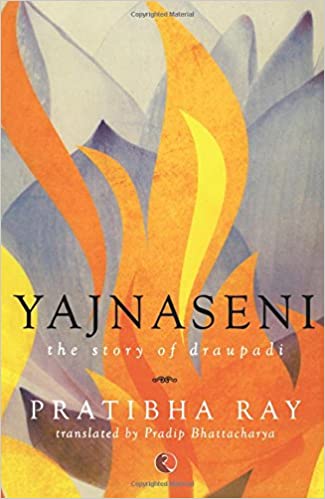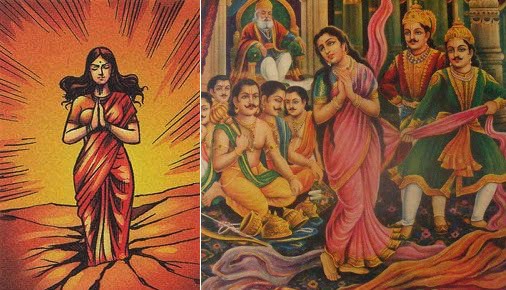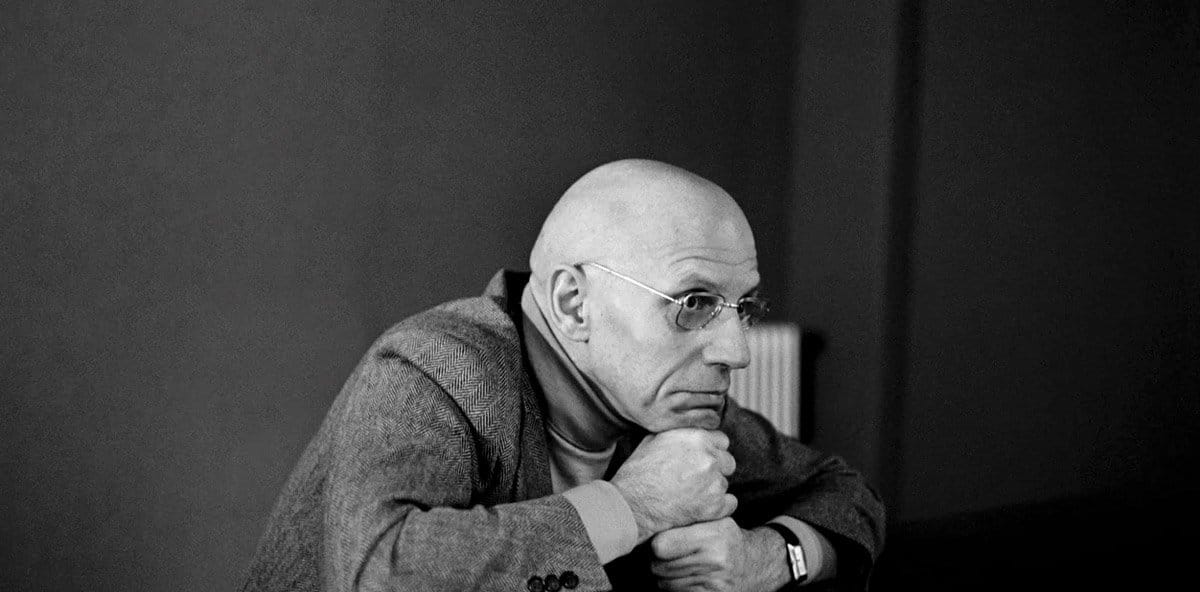Let’s play a game. We come up with 5 spaces that women can claim ownership over (completely or partly), and the fastest one wins. Can you think of five? Can you think of one? I concede defeat, I can’t think of any. Most of the world around us functions on the male default. Leslie Kern, in her book Feminist City points out that few urban spaces are designed to accommodate women’s bodies. This extends to other spaces as well, a great example being our myths.
Who do Indian Hindu myths serve? They serve Brahmanical hegemony and promote an ideal while limiting what atishudras, shudras and women can seek and demand as a right. Women’s interests are subordinated to male and dynastic grand narratives and their voice, agency, and even their bodily autonomy is taken away, pitting women against women in the age old trope of good vs bad.
Hindu mythology, of course, have been in the safe keeping of upper caste men for the longest time. Written by them, interpreted by them, and commented upon by them, they become even more masculine in their traditions.
These myths rely on the Sati-Savitri mould to reinforce what the ideal woman looks like – tractable, self-sacrificing, and a vessel for the man’s destiny. Women who abide by their naari dharma, suffer injustice with a silent dignity, and keep loving their husbands despite all that they go through are glorified. At the same time, other women, women who don’t conform to these structures are demonised.
Also read: Manusmriti: The Ultimate Guide To Becoming A ‘Good Woman’
Given the slightest hint of agency, they are branded as infidels, corrupted women, who lead to the downfall of dharma. What is the difference between the violence faced by Sita and Surpanakha? What makes Sita’s abduction unacceptable, but the cutting off of Surpanakha’s nose praiseworthy? Are these women really that different? Or is this simply a case of propriety and caste?
Hindu mythology, of course, have been in the safe keeping of upper caste men for the longest time. Written by them, interpreted by them, and commented upon by them, they become even more masculine in their traditions. Keeping this in mind, feminist retellings become interesting to look at. What happens when we put women back at the heart of these narratives? You would think that they would allow us to look past the misogyny and the silencing rampant in the text, and finally look at women in a three dimensional way, right? Wrong. At least partly. Most feminist retellings fail to acknowledge, let alone address the most problematic parts of these myths. So, do things really change?
The trouble hides in the masculine Hindu mythology. They are essentially stories that revolve around heroic deeds performed by upper caste men, and the glory they sought to crown themselves with. There are limited roles that women can play in this world, most of them binary tropes that do no justice to their courage and strength. This continues to hold even when women occupy centre stage in these stories.
Also read: Handy Lessons From Soorpanakha’s Story For Today’s Woman
Consider Pratibha Ray’s seminal novel Yajnaseni (1984). An early retelling of Draupadi’s tale, it shows us the events of the Mahabharata as they unfolded from her perspective. Despite the woman centric narrative that allows us to see what Draupadi sees and feels, we find that Dushala is merely the sister, Kunti and Gandhari are mothers, and Subhadra is a rival to Draupadi. These women are portrayed uni-dimensionally at best, valued only in their relation to men. Ties between them as women often pit them against each other (the relationship between Draupadi and Kunti is dry, to say the least). But as long as there is an acknowledgement of women’s voices, how does it matter?

The fundamental trouble with Yajnaseni lies in the fact that while it returns women’s voices to them, it fails to return their agency. The return of the voice is great. It helps us to lay the shame that has characterised the stories of these women for so long at the right doorsteps. We finally get to see the ‘heroes’ of the myth from feminine eyes which allow us a glimpse at the flaws the traditional versions hide from us. However, this return of voice is not synonymous with agency. Yajnaseni, for all its perspective, is still the story of a woman who pines for an emotionally abusive husband.
Draupadi keeps taking the blame that society heaps upon her, and tries continually to stand strong no matter how much it hurts her, which makes us wonder – is she really as strong as the book’s narrative would have us believe? Despite the change in voice, and the shift in focus, what doesn’t change is that it’s a man’s story. Yajnaseni fails to reclaim the space that is due to its protagonist, by refusing to see that Daruapdi’s story can stand by itself. On the contrary, it ends up pitting women against women and reinforcing the very paradigms that make the traditional versions so problematic.
So what does Yajnaseni uphold? Motherhood, like the ancient text it draws from. Kunti in her role as the long suffering mother who has made immense sacrifices for her children is glorified, and Darupadi is reminded time and again to pay heed to her wishes. Kunti’s guilt over the baby she abandoned is used to paint a sympathetic picture of her, and her virtues all derive from that singular identity of motherhood. Gandhari as a mother plays a similar role, but as the cautionary tale that shows how precarious this reverence is. Her love for her children is not acceptable when it makes her curse Krishna. In that light, she is no longer a mother, she becomes the woman who causes Krishna’s death.
Also read: We Owe Shurpnakha And Other Mythological Women An Apology
For the most part, however, women are depicted as destructive energy, demonised when they refuse to fit into the tidy categories that have been laid out for them (the greatest irony is that Maya, the temptress, is a woman). Draupadi, despite being the protagonist, is the catalyst for all hell breaking loose. She’s the wife who threatens to break the unity of the five brothers (apparently her only job is to keep them together), and the woman whose beauty needs to be possessed even at the threat of violence. Shikhandi remains the other in Yajnaseni, as the harbinger of death for Bhishma, and the prophecy only rubs that fact in our faces. Satyavati is the temptress who stole Bhishma’s rightful dues from him. Their struggles are acknowledged, but with a broad brushstroke of pity, and left there. Nothing changes.
Hélène Cixous once wrote of women in literature “If woman has always functioned “within” the discourse of man then it is time for her to dislocate this ‘within’ to explode it, turn it around, and seize it; to make it hers, containing it, taking it in her own mouth, biting that tongue with her very own teeth to invent for herself a language to get inside of”
For me, what really drives this failing home is how it compares with another classic of the Indian Hindu mythology retelling genre, The Liberation of Sita. Written by Volga it is stylistically very different from Yajnaseni. Narrated in the form of short stories each of which focus on different women from the Ramayan, it goes backwards and forwards in time to show us Sita’s conversations with other women, and how they help her find her freedom. Both books come from similar paternalistic Hindu mythology, but proceed in very different directions.
The biggest difference lies in the fact that Yajnaseni merely retells the Mahabharata, but The Liberation of Sita reclaims the Ramayana. Yajnaseni, by looking back, limits itself to narrating events with a different voice and a different perspective. The Liberation of Sita, by contrast, looks ahead, which allows it space to return the voices of Surpnakha, Ahalya, and Urmila (characters who have been largely ignored) while also giving them control over their stories and acknowledging the strength with which they’ve lived them. This translates to ownership that has been denied to women for far too long, as opposed to an agency that is bound within strictures, and is consequently no agency at all.
Yajnaseni offers us resignation through its tale of a woman who made the best out of a terrible hand. It takes for granted the traditional structures that the Mahabharata provides, and shies away from challenging them, providing us instead, insight into a story that is cruel to the women who populate it. The liberation of Sita goes the extra mile. It subverts the Ramayana by imagining a future that is free from the traditions that strangle the past, and for that perspective, is truly worth cherishing.
What it boils down to, then, is this – to retell this story is not enough. If we are ever to shake off the burden of tradition that we carry to this day in our myths, we need to reclaim them. To do that, is to find our agency within those narratives, to carve out our place within them. Hélène Cixous once wrote of women in literature, “If woman has always functioned ‘within’ the discourse of man then it is time for her to dislocate this ‘within’ to explode it, turn it around, and seize it; to make it hers, containing it, taking it in her own mouth, biting that tongue with her very own teeth to invent for herself a language to get inside of.” It is precisely that space which women-centric narratives should look to revel in. There is no space for women in Hindu mythology. It must be created, seized, at every turn, and if feminist retelling don’t do that, then who will?
Hima is a student at IIM Indore. Interested reading books, you’ll usually find her nose deep in all manner of theories *cue Anoushka Shankar on the headphones. She loves wandering (or is it wondering) through life, and stumbling across new ideas. She writes occasionally. You can find her on Instagram and Twitter
Featured Image Source: Counterview





I would appreciate if you dare to write the same way on “Islam” mythology. Also, kindly let me know if there is “space” for women in “Islam”. Thanks.
No offence, please 🙂 Just my thoughts. If you don’t like it, please delete my comment. thanks.